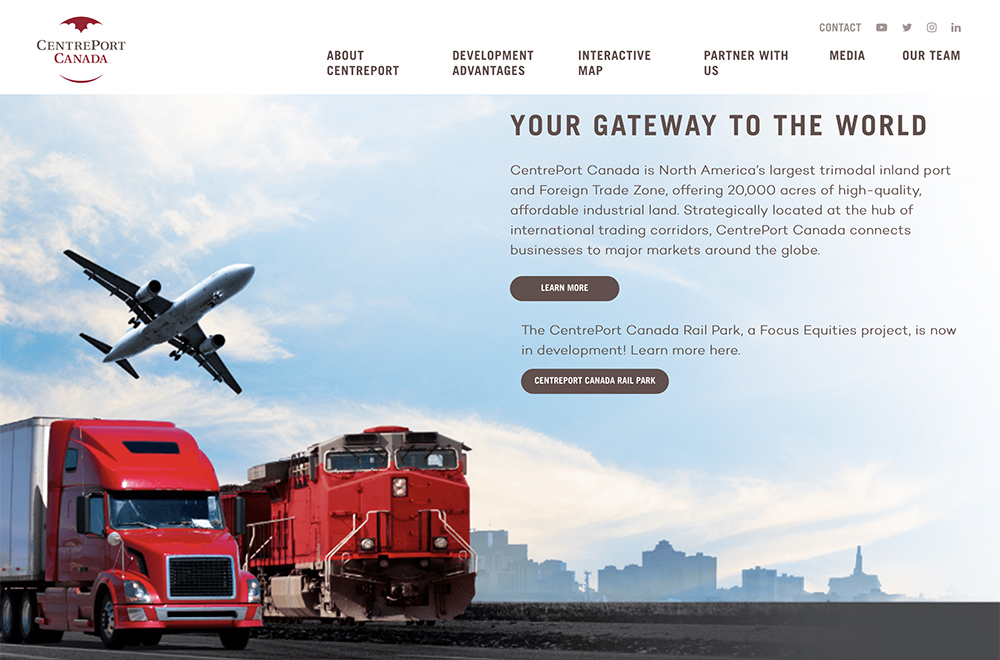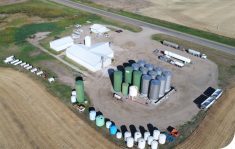CentrePort Canada in Winnipeg is designed to connect value-added manufacturers with rail, air and roadway systems
Farmers are beginning to feel the pull of a new wave of food processing demand that CentrePort Canada hopes to see surge inside its 20,000-acre site.
“Demand, as we know, creates opportunities for farmers,” said Diane Gray, CentrePort’s president and chief executive officer.
“Our goal, in trying to leverage our natural assets in terms of our agricultural economy by having more value-added agribusiness here, in my opinion, creates higher demand and in turn could create higher prices for farmers… for higher valued-added agricultural crops.”
CentrePort is a sprawling concept that is, piece by piece, becoming an impressive logistical reality on Winnipeg’s west side. It brings together air, rail and road systems, directly connecting the site to the East and West Coasts as well as most of North America.
Dozens of massive warehouses have been built and are being operated by the more than 100 new companies that have taken up residence.
Paterson GlobalFoods is building a specialty oat processing plant on one edge of the area, while a few kilometres across the site Merit Functional Foods’ canola and pea protein plant has already been processing crops supplied by Manitoba farmers.
A major rail yard is about to begin construction this summer. That part of the project will allow companies to locate facilities on spur lines that can then connect their products to the Canadian National Railway, Canadian Pacific Railway and Burlington Northern Santa Fe lines that come into the area.
“The expectation is that sites will be ready for development by summer 2023,” said Gray.
That network of connections will become more valuable if CP successfully completes its takeover of Kansas City Southern railway. CP will then be able to take rail traffic directly south from Western Canada to the heart of Mexico, and from Mexico to Canada, creating a new incentive for it to boost two-way trade between the countries.
The rail yard will permit companies that are unable to fill unit trains of product themselves to combine their rail cars with those of other manufacturers and become a more worthwhile customer for the railways.

“It creates an economy of scale for the companies locating there,” said Gray.
“By co-locating you create interest in the railway that’s servicing that area, but you can also share the infrastructure and share the cost and companies don’t have to bear that on their own.”
The site is right beside Winnipeg’s already bustling commercial trucking industry, which comprises more than 1,000 trucking companies. The Emerson border crossing one hour south of the city is the busiest commercial crossing west of Detroit-Windsor.
Distribution is already a major industry for Winnipeg, due to the city’s location in the centre of Canada, with that role growing today as air freight commerce grows.
Gray thinks more agricultural processing and manufacturing will appear at CentrePort, which in turn will bring more farmer attention to the new demand source.
“I think where they see demand they will jump on it,” said Gray.
“The goal is to provide that opportunity for companies that are looking to take our resources in Manitoba and do that value-added opportunity here rather than ship them out raw.”


















